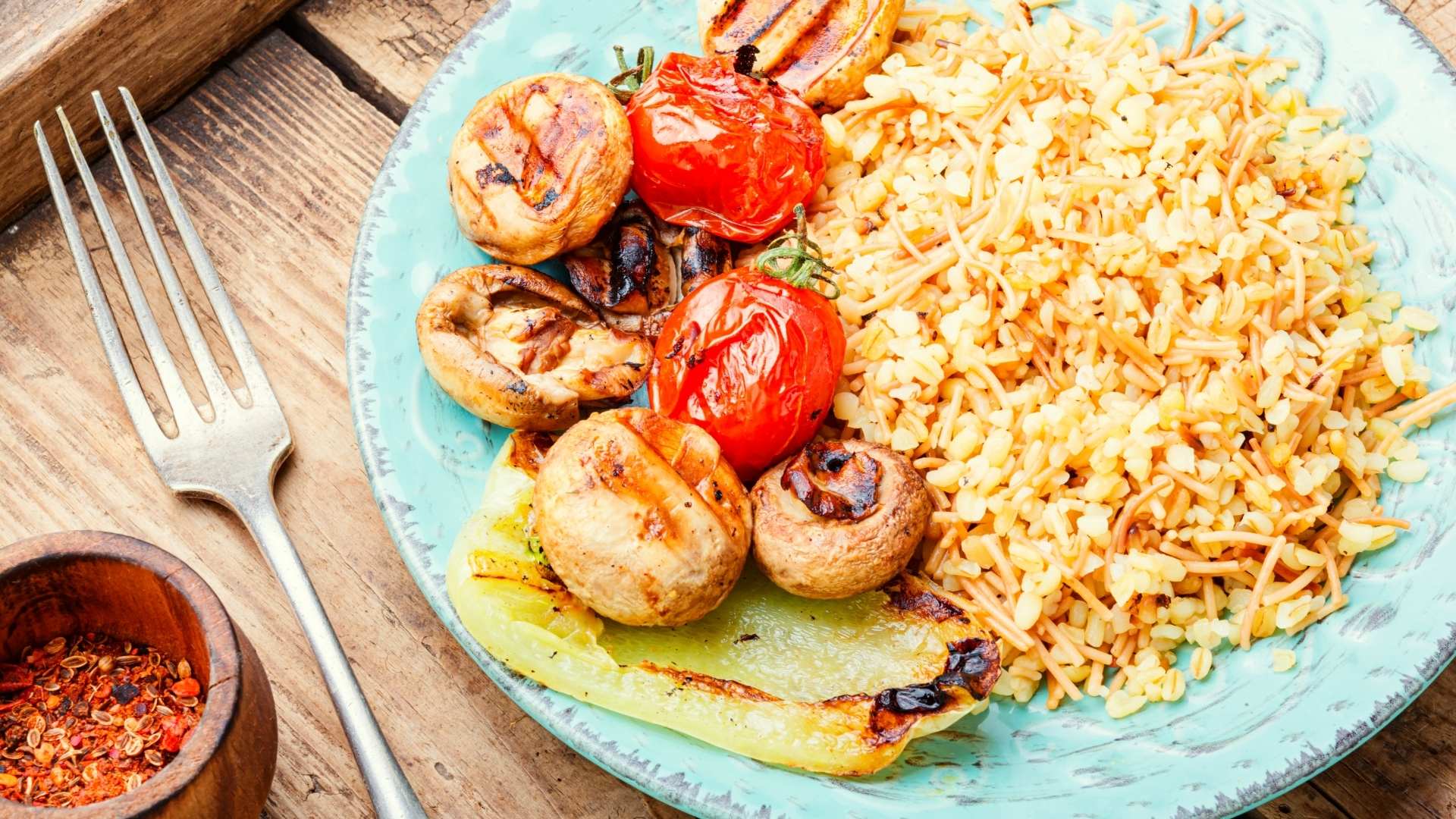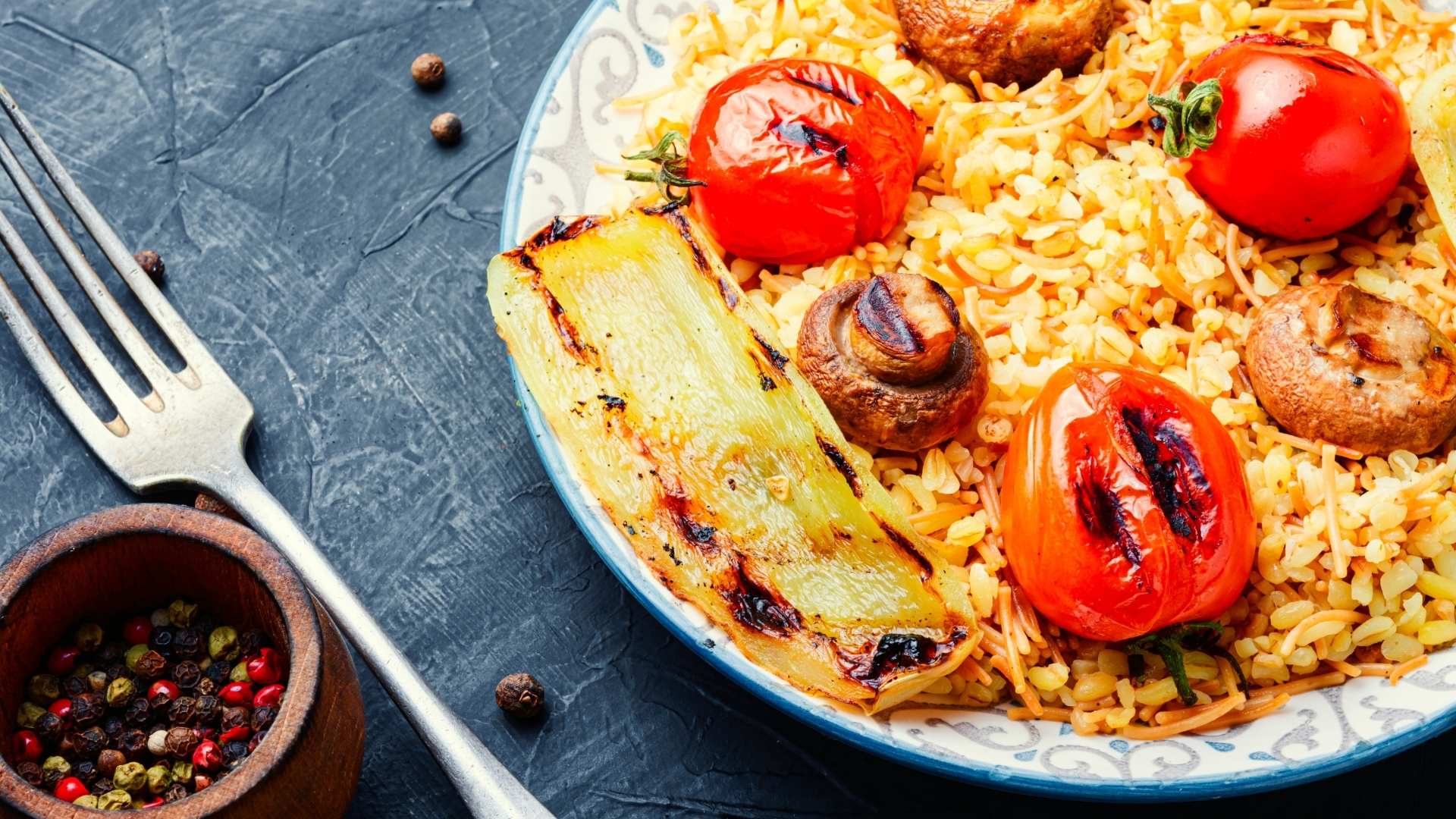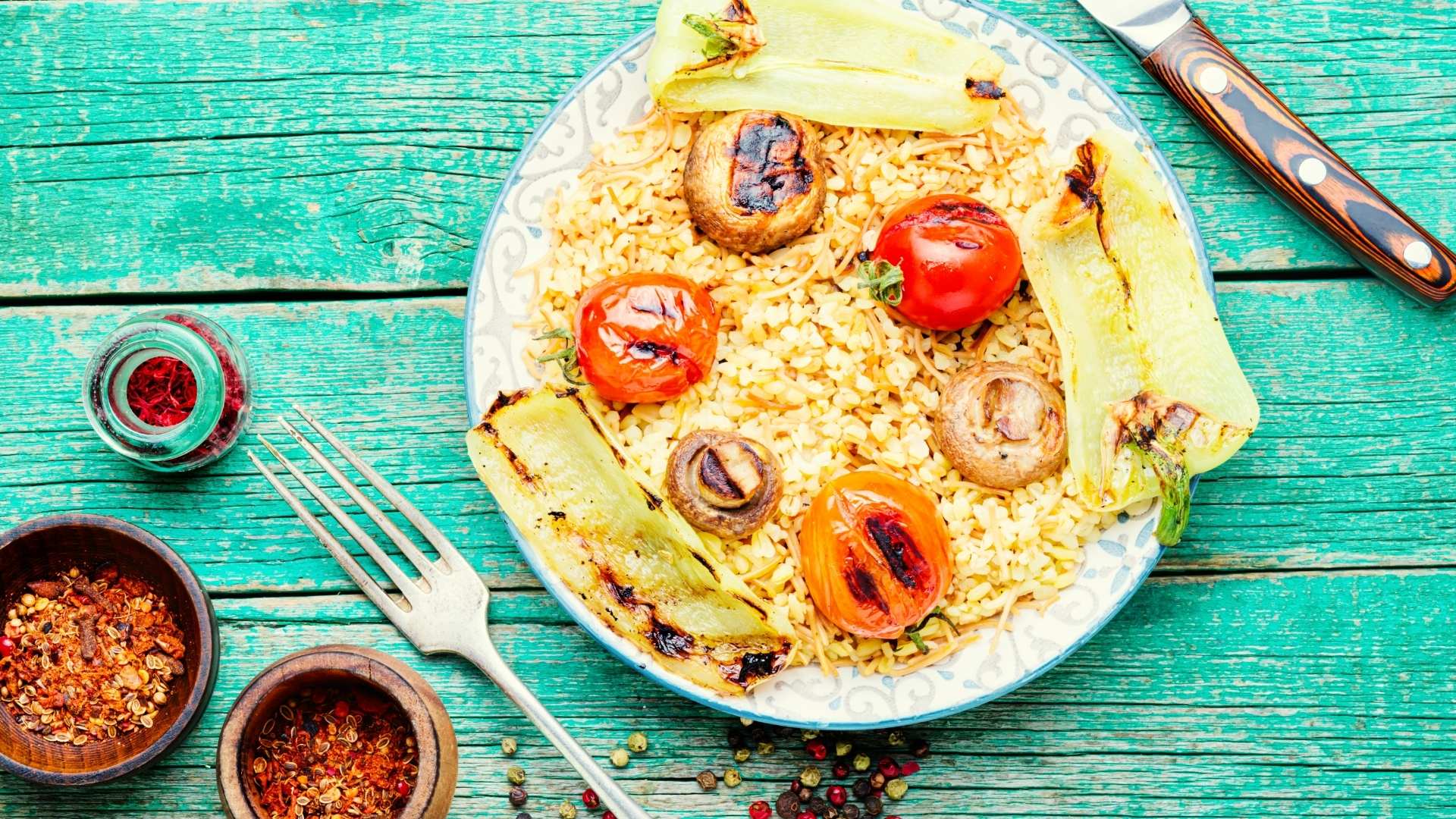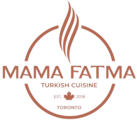In Turkish cuisine, pilav is the ideal side dish. Turkish cuisine makes heavy use of Turkish rice. The Turkish people have really high criteria for how it should be prepared, and it is used in various packed meat and vegetable meals as well as in pilav. An excellent pilav is evidence of a Turkish housewife’s talent in the kitchen.
Blog Contents
ToggleWhat Is Turkish Rice?
Pilavs are typically served as a side dish to meat or fish, though some heartier varieties, such as “yufkali” and “safranli midyeli pilav”, can be combined with a salad to make a complete meal. “Iç pilav”, which is made with currants, pine nuts, and calf liver, is popular throughout Turkey, particularly on special occasions. Bulgur, or broken wheat, has a nutty flavor and is used to make bulgur pilav. In Turkey, rice dishes with chickpeas are a favorite since they are filling and delicious. Certain pilavs are served cold with natural yogurt during the summer.

Ingredients
Mama Fatma prepares pilav for you with the healthiest and freshest products. In terms of Turkish rice ingredients, there are also materials that vary depending on your request. Bouillon or other seasonings may be waived if you don’t want them in your order, even though they are in the original Turkish rice recipe.
- 1 tablespoon of margarine or butter
- 1/fourth cup of cooking oil
- Rice, one cup (baldo or calrose)
- 2 cups of chicken bouillon or broth
- Salt, as desired.
- Black pepper, freshly ground, to taste
How To Make Turkish Rice? Pilav Instructions
First, collect the Turkish rice ingredients. The ratio of rice to liquid, as well as the cooking and resting times, are crucial for success. Melt the oil and butter together in a small pan. Over medium heat, add the orzo and stir continually until the pasta acquires a dark golden color. To prevent the butter and orzo from burning, take care and stir frequently.
Stir well after adding the raw rice to ensure that the grains are evenly covered. Bring the mixture to a boil after adding the chicken broth, salt, and pepper. Reduce or omit the salt if you’re replacing the stock with chicken bouillon.
Low heat and a cover are required. Let the rice 20 minutes to cook gently till the liquid is absorbed. Remove the pan from the heat and set it aside to cool for five minutes while retaining the lid at all times. If the interior of the lid develops too much condensation, open it, place some paper towels on top of the pan, and then replace the lid. This will absorb more moisture and enable the rice to steam evenly going forward.
To separate the grains and loosen the bottom of the rice before eating, open the lid, then give it a gentle stir. To create the traditional appearance of rice pilav, use a tiny dinner bowl or ramekin as a mold. Using the back of a spoon, compact the rice into a tight layer in the bowl. Place the bowl on a serving dish upside down. The pilav should stay in the mold after popping out.
What Is Turkish Baldo Rice?
Baldo rice is used most frequently in Turkey to make pilav. This is a plump white rice with a shorter cooking time than Italian Arborio and risotto rice. Use twice as much water for rice as you would for basmati since baldo rice takes more water. Employ a rice-to-water ratio of 1:2. Turkish rice shouldn’t be sticky, so rinse it in clear water until all of the starch is gone. It won’t get sticky because of this. There are pilav recipes that call for long-grain rice as well, but the texture will be significantly different.

Do They Eat Rice In Turkey?
Turkish rice can be stored in the refrigerator for up to three days in a sealed container. As in many other Middle Eastern nations, small grain rice is preferred in Turkey for all uses. You should serve this pilav as a side dish with beef, chicken, or fish. Change the butter with an extra tablespoon of oil, and swap the chicken broth with vegetable broth to create a vegan-friendly pilav.
For 3 to 5 days, store leftover Sehriyeli Pilav in the refrigerator in an airtight container. Transfer the rice pilav to a zip-top freezer bag and squish out as much air as you can before freezing. For up to six months, freeze. In the refrigerator, defrost overnight. Place the pilav in an oven-safe container if you want to reheat it in the oven. Cover with foil and heat for 15 to 20 minutes, and until hot, in an oven warmed to 350 degrees Fahrenheit.
What Is Turkish Rice Made From?
A proper Turkish rice pilav can only be made with Turkish baldo rice, therefore, grain selection is equally important. A variety of medium-grained rice called baldo comes from the Piedmont area of Italy. It was created by combining various grains, notably Arborio rice. Turkish baldo rice is grown in Balkesir, Turkey, and is frequently used to make pilavs and stuff vegetables or vine leaves.
Wheat was the grain that was most frequently consumed in the Mediterranean region. Fresh bread and numerous variations of bulgur pilav served as the foundation of the cuisine in Turkey and the Middle East. The Persians helped rice become more well-known in this region of the world. Ottoman court chefs soon became interested in their lavish pilavs and brought the fine grain into the kitchens of the palaces.

What Is Şehriye?
The use of little pieces of pasta, fried with a little oil or butter, is what distinguishes the Turkish rice recipe from most other cuisines. This gives the rice a distinct texture and aesthetic appeal.
These tiny pasta pieces, known as şehriye (sheh-ree-yeh) in Turkish, can be found as either pasta (arpa şehriye, or “barley noodle”) or as tiny pieces of angel hair pasta (tel şehriye, or “thread noodle”) in Turkish cuisine. A large portion of the Middle East also often uses this method of cooking rice.


